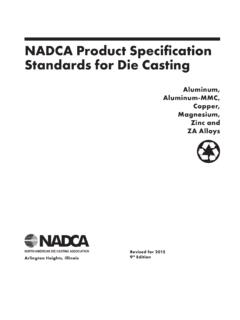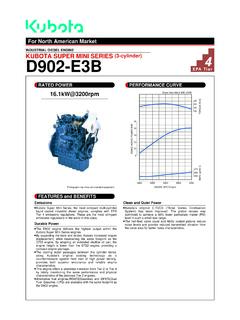Transcription of Lab 4: Gel Electrophoresis - Vanderbilt University
1 I ve Lab 4: Gel Electrophoresis Standard Updated: June 2021 Project Guide LAB 4: GEL Electrophoresis 2 Table of Contents Page Contents 3 Introduction 4 Key Elements for Gel Electrophoresis 5 How to Read a Gel 6 How to Interpret Gel Electrophoresis Results Gel Electrophoresis Lab 7 Pre-Lab Questions 8 Getting Started 9 Visual Equipment and Reagents Checklist 12 Gel Electrophoresis Protocol: Standard 14 Results 15 Post-Lab Questions 16 Troubleshooting 19 Database Checklist 20 Glossary Content is made available under the Creative Commons Attribution-NonCommercial-No Derivatives International License.
2 Contact if you would like to make adaptations for distribution beyond the classroom. The Wolbachia Project: Discover the Microbes Within! was developed by a collaboration of scientists, educators, and outreach specialists. It is directed by the Bordenstein Lab at Vanderbilt University . Some figures created with LAB 4: GEL Electrophoresis 3 Introduction This lab will determine the presence or absence of amplified DNA in your samples by visualization on an agarose gel. Arthropod and Wolbachia DNA, if present, will be distinguishable based on the size, or base pair (bp) length, of the DNA molecule.
3 Gel Electrophoresis Gel Electrophoresis is a method of separating DNA fragments by movement through a Jello-like substance called agarose. Derived from a seaweed polysaccharide, agarose gels form small pores that act as sieves to separate DNA based on size; whereby smaller DNA molecules move through the pores faster and easier than larger molecules. Loading wells are oriented at the top of the gel to allow for precise insertion of PCR products into the gel. An electrical current is applied to move negatively charged DNA molecules away from a negative electrode (-) and toward a positive electrode (+).
4 DNA migrates through the gel in a single, vertical lane. Three factors influence the speed of movement: (i) the voltage of the electrical field, (ii) the concentration of agarose, and (iii) most importantly, the size of the DNA molecule. DNA Visualization DNA itself is not visible within an agarose gel. Therefore, a fluorescent stain is added to the gel that binds DNA and fluoresces under UV or blue light. DNA will appear as a horizontal line, or band, on the agarose gel. Figure Gel Electrophoresis allows for differentiation of DNA by size. Larger fragments do not move as fast as smaller fragments, and there is a nonlinear relationship between the size of the DNA fragments and the distance migrated.
5 A DNA ladder, a sample with known fragment sizes, should always be run to identify the size of experimental bands. LAB 4: GEL Electrophoresis 4 Key Elements for Gel Electrophoresis PCR Products (DNA) The purpose of this lab is to visualize the PCR products, or amplified DNA, from your arthropod samples. DNA Ladder A DNA ladder is a cocktail of DNA fragments with pre-determined sizes. The ladder, also called a DNA marker, is loaded alongside experimental samples as a reference tool for estimating band size. Agarose Gel Agarose powder is dissolved into running buffer and boiled until the solution becomes clear.
6 After slightly cooling, it is poured into a casting tray with combs to solidify and form the agarose gel. DNA will migrate through the gel and form separate bands based on size (correlating to length in bp). DNA Stain A DNA stain is added to the agarose gel to visualize DNA under a UV or blue light. There are two primary methods of DNA Staining: - Pre-stain: DNA stain is added to the agarose gel mixture after melting, but before pouring, the gel. - Post-stain: The gel is incubated in a stain solution after gel Electrophoresis . Running Buffer Running buffer is a conductive liquid that allows the DNA to migrate through the agarose gel.
7 It is important that the agarose gel be made using the same buffer. Tris/Borate/ETDA (TBE) or Tris/Acetic Acid/EDTA (TAE) are commonly used. Loading Dye Loading dye has two primary components: (i) a visible dye indicates how far the DNA has run on the gel and (ii) glycerol, which is denser than the buffer, ensures that samples fall into the loading wells rather than float back out. Some Taq Master Mixes ( , Promega GoTaq) already contain a pre-mixed loading dye. Electrophoresis System Running buffer and the agarose gel will be placed into the chamber of an Electrophoresis system.
8 After loading the samples, an electric current is applied to move the negatively charged DNA towards the positive end of the system. Without this electric field, the DNA will not migrate through the agarose gel. If the electric field is reversed, the DNA will run in the opposite direction, towards the top of the gel, and eventually exit the gel. Figure Pictograph of all necessary components for gel Electrophoresis . LAB 4: GEL Electrophoresis 5 How to Read a Gel Lanes DNA that was loaded into each well will migrate in a single, vertical lane towards the (+) charge. Bands When DNA becomes separated by size due to gel Electrophoresis , they appear as bands in the gel.
9 These are clearly defined, bright lines in the gel. DNA Ladder The DNA ladder will contain multiple bands in one lane. Each band represents a pre-determined length of DNA and can be used as a reference tool to estimate DNA size for each of the experimental samples. Refer to the product information for specific band sizes. Primer Dimers PCR reactions are set up with an excess of primers. In addition, some primers bind to each other instead of binding to the DNA, creating primer dimers. Primers are ~25bp long, so excess primers appear as fuzzy bands on the bottom of the gel ~25-50bp.
10 This is normal and to be expected. Reading a Single PCR vs. Duplex PCR Gel A single PCR gel will contain only one amplified PCR product, either Wolbachia or arthropod, in each lane. A separate gel will need to be run for each DNA type. A duplex PCR means that both the arthropod barcoding gene and the 16S rRNA fragment from Wolbachia were amplified in the same PCR reaction. When visualizing this PCR reaction, two bands should appear in the same lane if Wolbachia is present, and only one band will appear if the arthropod is uninfected. Arthropod Barcoding Gene (CO1): 708bp Wolbachia Specific Gene (16S rRNA): 438bp Expected Band Sizes LAB 4: GEL Electrophoresis 6 How to Interpret Gel Electrophoresis Results To interpret gel Electrophoresis results, first ensure that all controls are correct.













